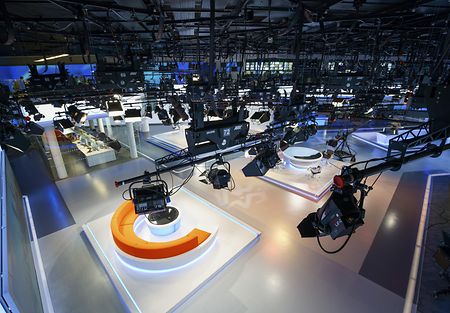In 1929, when Hockey Night in Canada began broadcasting from Toronto’s Arena Gardens, the information offered was limited to descriptions of the third period of play so as not to discourage local ticket sales. Today, economic activity related to hockey is estimated to be worth more than $11 billion annually, and Sportsnet’s National Hockey League (NHL) coverage originates in a sparkling, custom-built Toronto television studio that is part of Rogers Communications.
The Sportsnet Studios are a key element of the network’s reimagined approach to the traditional hockey broadcast, content production, and distribution. State-of-the-art technology, including virtual reality set extensions, augmented reality, and 3D capabilities, allows for interactive, immersive content that brings fans into the conversation. In addition to Hockey Night in Canada, the studios host Scotiabank Wednesday Night Hockey and regional NHL coverage. Future plans include live National Basketball Association (NBA), Major League Baseball (MLB), and other broadcasts.
Lighting director James Downey, a veteran of a wide range of lighting jobs of every description, was on board in January 2020 as the new studio was designed from the ground up. The job would be the latest of more than two dozen Rogers Communications studio installations overseen by Downey. The actual install was done between August and October 2020.





